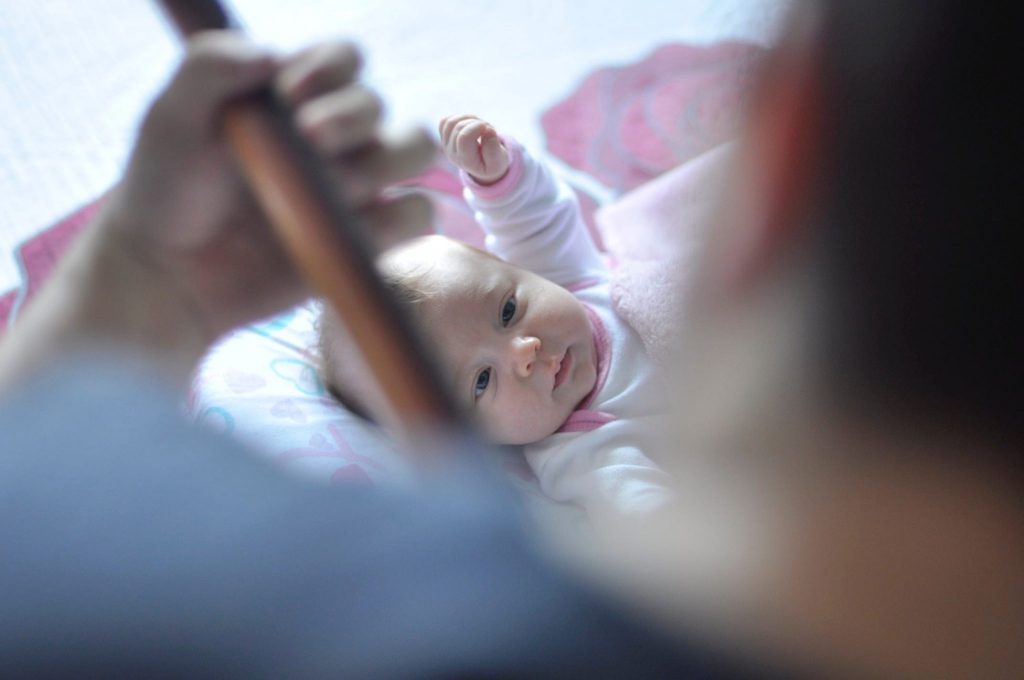Exploring art and music are wonderful ways to connect with babies and encourage their growth. Colors and textures found in books, paintings, fabrics, and other materials will stimulate your baby’s brain development.
The Young Artist
Art helps us learn about shapes, colors, and lines. Art also nurtures our creativity and brings out deep feelings. When possible, allow your baby to play with her food by smearing it on the table or high-chair tray. She may “draw” designs or circles. Remember, what looks like a total mess to you is a work of art to her! When she is an older toddler or preschooler, she can work on her table manners. Now is the time to learn how to explore textures through touch and taste.
When your baby is able to grasp a large crayon, marker, or pencil, give her a surface and lots of room to experiment with these tools. This will also promote her ability to read and write.
You’re Playing My Song!
We all know that music can soothe the soul or trigger strong feelings. While the right music can help your baby fall asleep or make her giggle, loud harsh music may damage her eardrums, cause her pain, or make her feel uncomfortable and afraid.
Studies have shown that certain types of light classical music, such as music by Mozart, can help brain development. Engaging babies with music has also been shown to boost their cognitive development related to recognizing patterns and more (learn more here.) Listen and watch your baby when you play music. She will let you know what makes her feel comfortable, happy, or sleepy. She will also let you know what makes her feel uncomfortable, angry, or afraid.
Singing and listening to songs and nursery rhymes is a great way to have fun with and bond with your baby. Visit your local library to look for music that you can bring home to your family. Ask your librarian to help you select music for babies and children.
It’s also fun to make up songs that are special to you and your baby. Babies love it when you sing to them! Songs and nursery rhymes help your baby learn about patterns, language, and stories—important skills in the kindergarten classroom. They can also help smooth over rough times, such as having her clothes changed, having her diaper changed, getting into her bath, or having her nails clipped.


